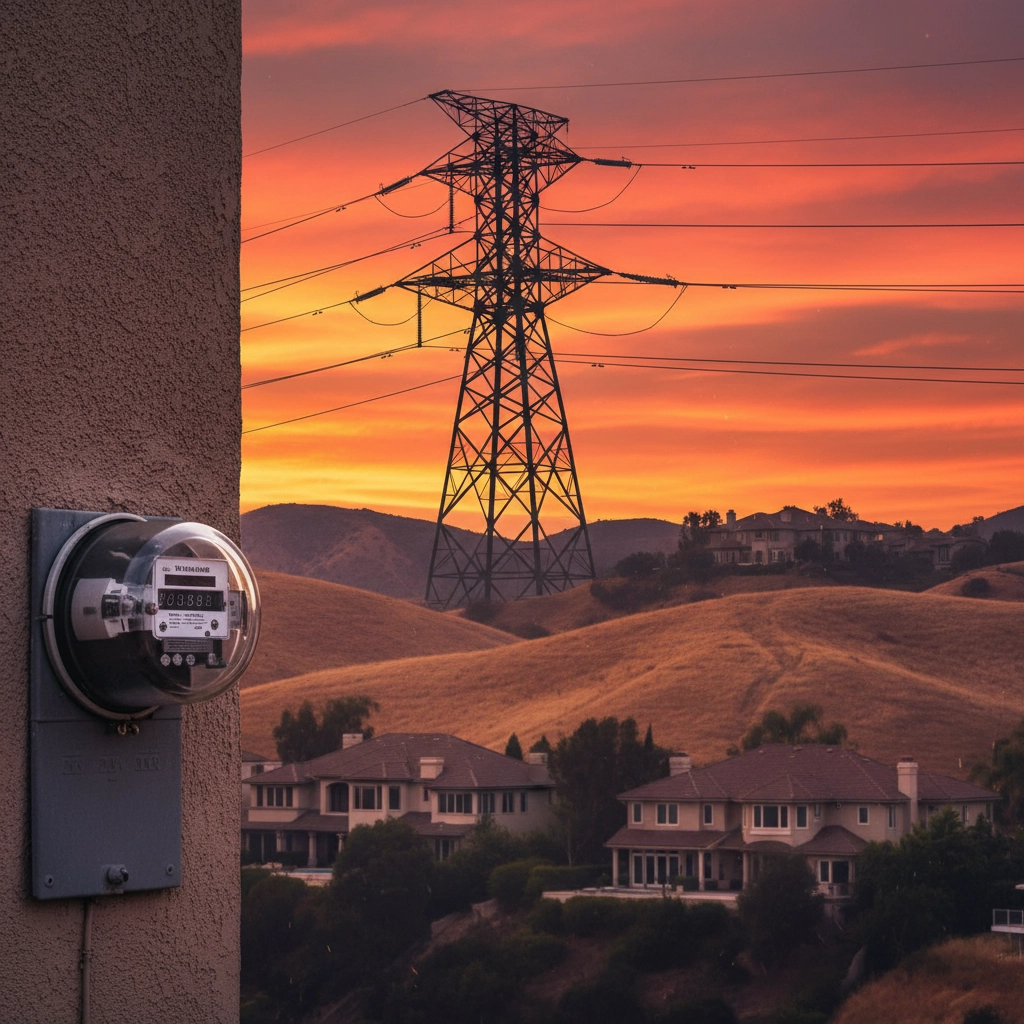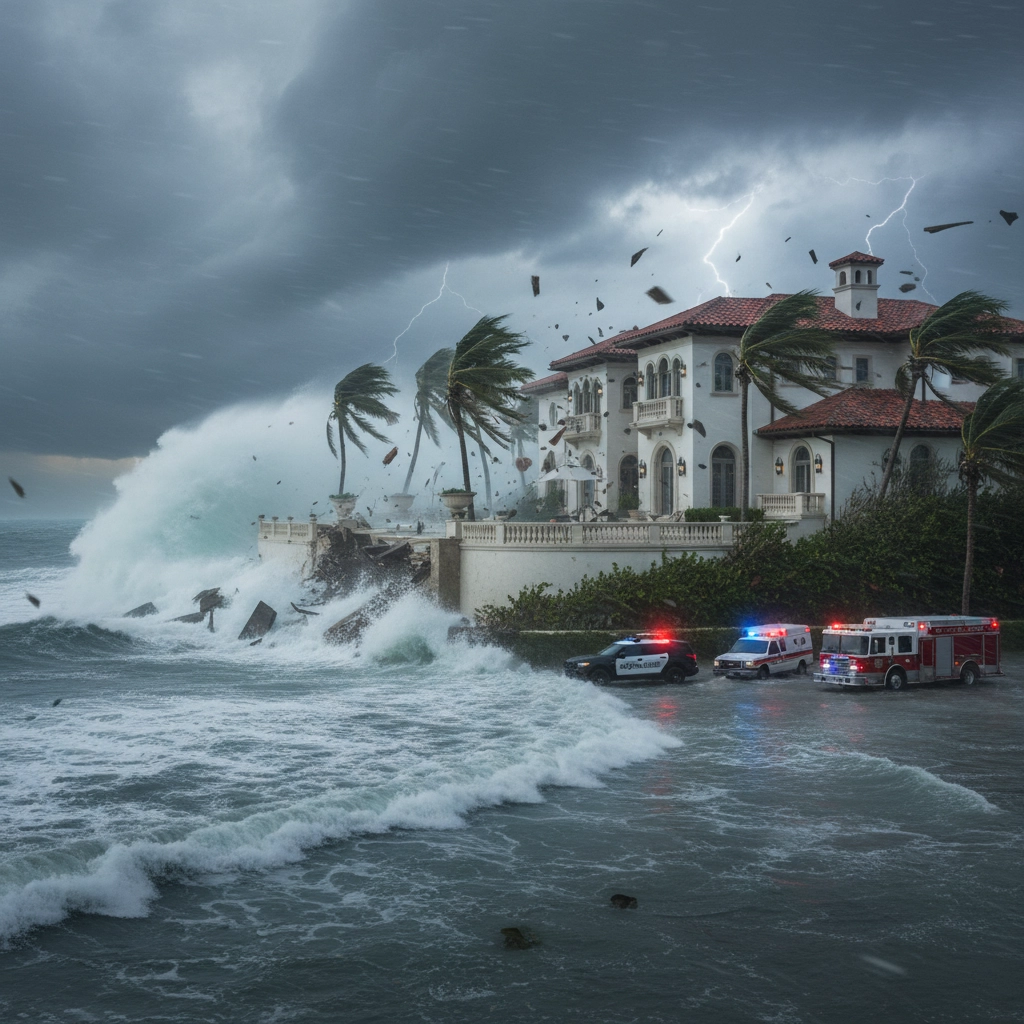California Climate Reckoning: When Excess and Money Meet Reality
- Randyb Dinwiddie
- Oct 31
- 4 min read
California just got a cold slap of reality, and it stings. On September 30, 2025, Governor Newsom signed an executive order launching what he called a "whole-of-government response" to the economic and insurance consequences of the climate crisis. Translation? The Golden State's decades-long party of excessive spending, risky coastal development, and "we'll figure it out later" mentality just hit a brick wall made of wildfires, insurance cancellations, and economic chaos.
This isn't just California's problem anymore, it's a preview of what happens when big money meets bigger consequences.
The Party's Over: California's Climate Bill Comes Due
For years, California lived like that friend who runs up credit card debt assuming they'll always make more money tomorrow. Massive developments in fire-prone areas? Sure! Building luxury homes in canyons that historically burn every few decades? Why not! Pretending that throwing money at problems would make climate change go away? Absolutely!
Now the bill collector is at the door, and it's not taking IOUs.

The executive order isn't just policy, it's an admission that California's approach has been fundamentally flawed. The state that loves to lecture everyone else about climate action is scrambling to deal with insurance companies fleeing faster than tourists from a wildfire evacuation zone.
When Insurance Companies Say "Nope"
Here's where it gets really ugly. Insurance companies, you know, the folks whose entire business model depends on calculating risk, are basically telling California, "Thanks, but no thanks." Major insurers have stopped writing new policies or have pulled out entirely from high-risk areas.
State Farm stopped accepting new homeowner applications in California. Allstate did the same. These aren't small regional companies making emotional decisions, these are massive corporations with armies of actuaries who've done the math and decided California is too risky to insure.
The state's response? Create a government insurance program that taxpayers will ultimately fund. Because nothing says "sustainable solution" like socializing the losses while privatizing the profits from all that risky development.
The Cost of Looking Good
California loves being the progressive leader, the state that's "ahead of the curve" on climate action. But being first isn't always smart when you're rushing toward a cliff.
Take the state's utility situation. Pacific Gas & Electric has racked up billions in wildfire-related costs, which get passed directly to consumers through higher rates. The average California household now pays some of the highest electricity rates in the nation, not because they use more power, but because they're subsidizing the cleanup from decades of poor planning and maintenance.

California utilities are spending billions on fire prevention measures that should have been implemented years ago. Who pays? Ratepayers. Who benefits? Developers who built in fire zones and utilities that deferred maintenance for decades.
The Development Casino
Let's talk about the elephant in the room: California's obsession with development in areas that nature clearly marked as "DO NOT BUILD HERE."
Malibu? Built in a fire corridor. Paradise? Built in what fire experts call a "perfect storm" location. Thousands of homes in wildland-urban interface zones where fires are inevitable, not just possible.
But the money was too good to resist. Property taxes, development fees, construction jobs, everyone got rich while the getting was good. Now those same communities are either burned out, uninsurable, or both.
The state is essentially asking taxpayers statewide to subsidize the rebuilding of communities that probably shouldn't have been built in the first place. That's not climate action, that's throwing good money after bad.
Other States, Take Notes
Here's the real lesson for the rest of America: even California's wealth and resources can't shield it from climate consequences. If the fifth-largest economy in the world is struggling with this, what makes other states think they're immune?

Florida is already seeing similar insurance market chaos. Texas is dealing with grid failures and extreme weather costs. Louisiana is literally disappearing into the Gulf of Mexico. The difference is those states haven't spent decades promising they had all the answers.
California's executive order is essentially the state admitting it doesn't have the solutions it claimed to have. After years of climate virtue signaling and policy posturing, they're facing the same harsh reality as everyone else: climate change is expensive, and someone has to pay.
The Money Pit Gets Deeper
The executive order promises more government intervention, more taxpayer funding, and more bureaucratic solutions to problems created by decades of poor decision-making. Sound familiar?
California's approach seems to be "if throwing money at the problem doesn't work, throw more money." But the state is already dealing with budget deficits, and climate costs are accelerating faster than revenues.
The state can't tax its way out of geography. It can't regulate away wildfire risk. And it certainly can't spend its way to climate immunity, though it's sure going to try.
Reality Check: What Actually Works
Want to know what actually reduces climate risk? Not building in stupid places. Maintaining infrastructure before it fails catastrophically. Creating policies based on science rather than politics.

California could have spent the last 20 years implementing smart building codes, restricting development in high-risk areas, and requiring realistic insurance pricing that reflects actual risk. Instead, it spent those years making climate change someone else's problem while enabling exactly the kind of development that makes disasters worse.
The Reckoning Spreads
California's climate crisis isn't staying in California. The insurance market disruption is affecting national carriers. Federal disaster relief repeatedly bails out the same risky developments. Climate refugees from California are moving to other states, bringing housing demand and urban planning challenges with them.
This is what happens when you let politics and profit override basic risk management for decades. The consequences don't stay contained, they spread like, well, wildfire.
The Bottom Line
California's executive order isn't climate leadership: it's damage control. The state that positioned itself as America's climate solution is now scrambling to deal with problems it should have seen coming decades ago.
Other states have two choices: learn from California's expensive mistakes or repeat them. Given political incentives and development pressures, we'll probably see a lot more repeating than learning.
The real tragedy isn't that California is dealing with climate consequences: it's that the state had the resources, expertise, and time to do this right, and chose not to. Now everyone gets to pay for those choices, not just Californians.
Climate change is real, expensive, and unavoidable. But making it worse through bad policy and wishful thinking? That's entirely optional. California just proved that even unlimited confidence and deep pockets can't overcome basic physics and poor planning.
The party's over. Time to pay the tab.
















































Comments